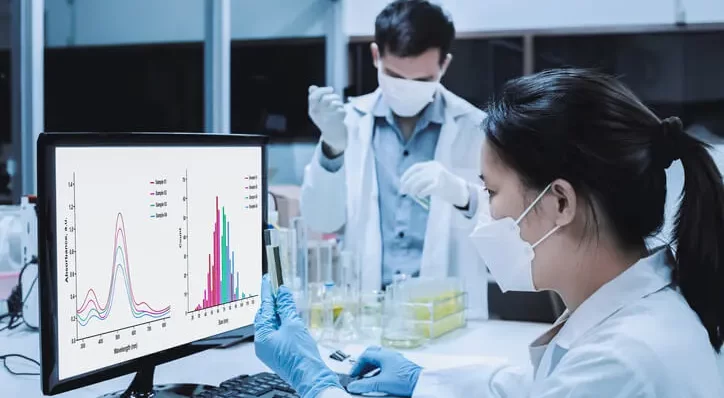Nanotechnology, the manipulation of matter on a molecular or atomic scale, has emerged as a transformative force across various industries. In recent years, its applications in dentistry have gained significant attention, offering new avenues for diagnostics, treatment, and preventive care. This article explores the multifaceted role of nanotechnology in dentistry, examining its impact on materials, diagnostics, therapeutic interventions, and overall oral healthcare.
Table of Contents
ToggleNanomaterials in Dentistry
One of the primary areas where nanotechnology has made a substantial impact is in the development of advanced nanomaterials for dental applications. Nanomaterials exhibit unique properties due to their small size, high surface area, and increased reactivity. In dentistry, these materials are employed for various purposes, including restorative dentistry, preventive care, and drug delivery systems.
Nanocomposites for Dental Restorations
Traditional dental materials, such as amalgam and composite resins, have limitations in terms of strength, durability, and aesthetics. Nanocomposites, composed of nanoscale filler particles in a polymer matrix, address these shortcomings. These materials offer superior mechanical properties, enhanced esthetics, and improved wear resistance, making them ideal for dental restorations like fillings, crowns, and bridges.
Nanoparticles for Preventive Care
Nanoparticles, such as hydroxyapatite nanoparticles, have been incorporated into toothpaste and mouthwash formulations. Hydroxyapatite is a natural component of tooth enamel and plays a crucial role in tooth remineralization. Nanoparticles of hydroxyapatite can penetrate the enamel more effectively, promoting remineralization and strengthening tooth structure. This approach aids in preventing tooth decay and sensitivity.
Nanodiagnostics in Dentistry
Nanotechnology has revolutionized diagnostic tools in dentistry, enabling early detection of oral diseases with increased sensitivity and precision. Nanosensors and imaging techniques have been developed to provide a more accurate assessment of oral health conditions.
Nanosensors for Disease Biomarkers
Nanosensors capable of detecting specific biomarkers associated with oral diseases, such as periodontitis and oral cancer, have been developed. These sensors can identify molecular changes in saliva or gingival crevicular fluid, allowing for early diagnosis and intervention. This early detection is crucial for effective treatment and improved patient outcomes.
Nanoparticles in Imaging Technologies
Nanoparticles have been employed in imaging technologies, such as contrast agents for dental radiography and magnetic resonance imaging (MRI). These contrast agents enhance the visibility of dental structures and facilitate the identification of abnormalities. Nanoparticle-enhanced imaging contributes to more accurate diagnoses and treatment planning.
Nanotherapeutics in Dentistry
Nanotechnology has opened new avenues for therapeutic interventions in dentistry, providing targeted and controlled drug delivery systems. These innovations enhance the efficacy of treatments while minimizing side effects.
Nanoparticles for Drug Delivery
In the field of periodontics, nanoparticles have been used to encapsulate antimicrobial agents and growth factors. This allows for controlled release at the site of infection or tissue regeneration, improving the effectiveness of periodontal therapies. Additionally, nanocarriers can transport drugs across the oral mucosa, enabling targeted drug delivery for conditions like oral cancer.
Nanomaterials for Root Canal Treatment
Nanoparticles have been incorporated into materials used for root canal treatment. These materials exhibit antimicrobial properties, enhancing the disinfection of the root canal system. Moreover, nanomaterials contribute to the sealing of root canals, preventing bacterial reinfection and improving the long-term success of endodontic procedures.
Nanotechnology and Oral Implantology
The field of oral implantology has benefited significantly from nanotechnology advancements. Nanoscale modifications to implant surfaces have improved osseointegration, leading to enhanced stability and longevity of dental implants.
Nanostructured Implant Surfaces
Nanostructured surfaces on dental implants promote better cell adhesion and proliferation, accelerating the osseointegration process. Surface modifications at the nanoscale create a favorable environment for bone cells, resulting in increased implant stability and reduced healing times.
Nanocoatings for Implant Materials
Nanocoatings, such as hydroxyapatite nanocoatings, have been applied to implant materials to enhance biocompatibility and bioactivity. These coatings improve the interaction between the implant and surrounding tissues, reducing the risk of implant failure and complications.
Challenges and Considerations
While nanotechnology holds immense promise for advancing dentistry, it is not without challenges and considerations. Safety concerns, ethical implications, and regulatory frameworks need to be carefully addressed to ensure the responsible and ethical deployment of nanotechnological innovations in oral healthcare.
Safety Concerns
The potential toxicity of certain nanomaterials raises concerns about their safety in dental applications. Research is ongoing to understand the long-term effects of exposure to nanomaterials and to develop safe formulations for clinical use.
Ethical Considerations
The ethical implications of nanotechnology in dentistry include issues related to patient consent, privacy, and the equitable access to advanced technologies. Ethical guidelines must be established to navigate these concerns and ensure that patients are well-informed and treated ethically.
Regulatory Frameworks
The regulatory landscape for nanotechnology in dentistry is evolving, and the development of standardized protocols and regulations is essential. Regulatory bodies need to adapt to the rapid pace of technological advancements to ensure the safety and efficacy of nanotechnological applications in oral healthcare.
Future Prospects and Conclusion
The integration of nanotechnology into dentistry represents a paradigm shift in oral healthcare, offering unprecedented opportunities for diagnosis, treatment, and prevention. As research in this field continues to evolve, the development of innovative nanomaterials, diagnostics, and therapeutics will likely redefine the standards of care in dentistry.
Future prospects include the refinement of nanomaterial formulations, the discovery of novel applications, and the establishment of robust safety protocols. Collaboration between researchers, clinicians, and regulatory bodies will be essential to harness the full potential of nanotechnology in dentistry while addressing ethical and safety considerations.
In conclusion, nanotechnology has ushered in a new era for oral healthcare, providing a range of tools and materials that enhance the precision, efficacy, and safety of dental treatments. The ongoing advancements in nanodiagnostics, nanotherapeutics, and nanomaterials underscore the transformative impact of nanotechnology on the field of dentistry, promising a brighter future for oral health worldwide.

